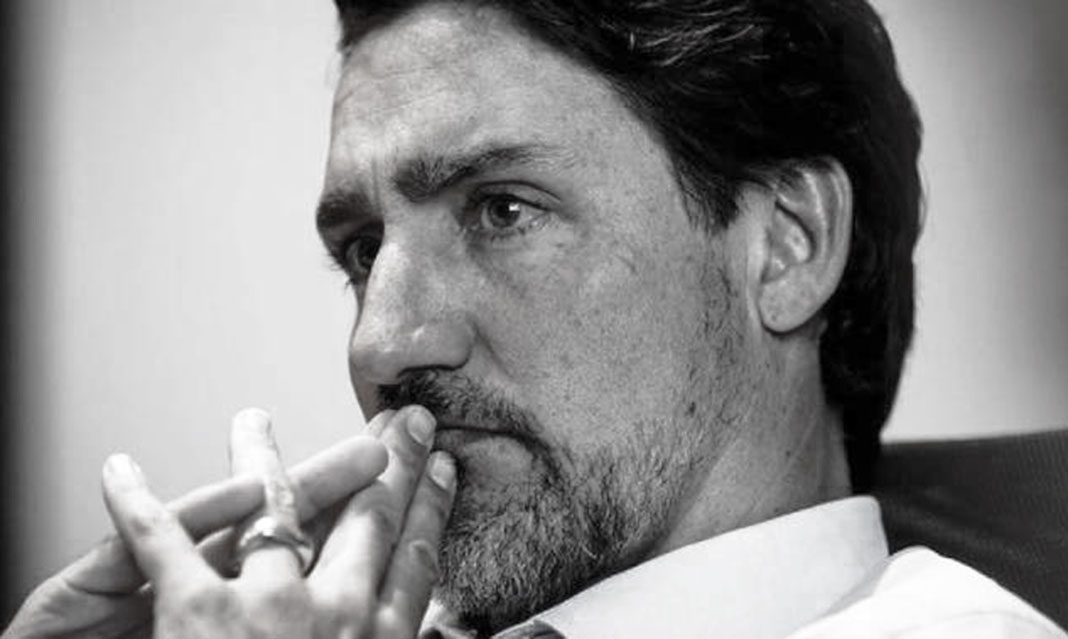We’ve all seen it dominating the news, a tragedy that may change Canadian politics for a long time to come. An issue that has garnered strong opinions from all sides of the political spectrum: Justin Trudeau’s new beard. Yes, JT has decided to sport a new beard this year—because it went so well the last two times. While this new beard is not as atrocious as it’s predecessors, I can’t help but ask “why?” when confronted with the image.
There are many questions that need to be asked, like, “why now?” and, “why that style of beard?” and, “has Trudeau been dying his hair black all this time?”
If you think such a discussion of one leader’s choice in facial hair is frivolous I would like to first of all applaud you for your naïve idealism, and secondly, point you to the body of research that says otherwise.
Now, the beard is a remnant of Trudeau’s Costa Rican winter vacation, and many people believe that he has held off on getting rid of it due to the media attention and the effort of staying cleanly shaven. These explanations are definitely factors, but I believe that when it comes to Trudeau’s image, nothing is done without careful consideration. So, let us explore the implications of facial hair in the political sphere.
Image is paramount in politics, so much so that whole teams are created to directly manage a politician’s image. Trudeau has famously cultivated his image to appear as a young, capable leader that is in tune with the younger generations’ most pressing issues, especially as a champion of gender issues. Yet, now it seems that the “young and hip” persona is being exchanged for a mature, statesmanlike one, and this change is significant.
Facial hair is a rarity among politicians, especially in the modern western tradition. The last Canadian prime minister to sport any kind of facial hair was Robert Borden in the early twentieth century, and the last fully bearded prime minister was Mackenzie Bowell, who served from 1894 to 1896. The popularity of being clean-shaven in politics can be attributed to many things, such as the need among soldiers to be clean-shaven in World War II for their gas masks to seal properly. Yet regardless of how beards fell out of fashion, their modern implications are fascinating.
According to a 2015 study conducted by professor Rebekah Herrick and two other Oklahoma State University professors titled, “Razor’s Edge: The Politics of Facial Hair,” facial hair can have benefits and drawbacks depending on the message politicians want to send. The study focused on U.S. Congressmen and the perceptions that surrounded those who chose to wear a beard. They found that politicians with facial hair were seen as “more masculine, and less supportive of feminist issue positions,” and that “facial hair led to presumptions about greater masculinity, which in turn influenced assumptions about issue positions.”
However, regardless of the perceptions of participants, the study found that there was, “no evidence that legislators with facial hair voted any differently from those without facial hair. On women’s issues and legislation pertaining to the use of force, there were “no significant differences between the voting records of Congressmen with and without facial hair.”
So, what does this mean for Trudeau’s image? Well, as many in the media have speculated, the new beard may be an attempt to cast Trudeau as a seasoned veteran, or to emphasize the fact that he is, in fact, 48 years-old and getting close to 50 (could the next phase be Boomer Trudeau?). Yet, I think that Trudeau’s beard, however long it stays, is a sign that Trudeau is not only “cooling down” his image—whatever that means—but that he’s taking on a new role, one that will see him fighting to regain the power that has slipped through his hands during the last election.
Of course, it should also be noted, as former Saskatchewan premier Brad Wall did in his National Post piece, the obsessiveness that accompanied Trudeau’s new beard. In today’s era, it is all too common for the public to focus on a politician’s appearance, and even more prevalent for them to be mocked for it. Often, it is a trend that particularly targets female politicians and racialized politicians. While Trudeau might get a snide remark or a political jab because of his new beard, it is important to recognize that neither the sarcasm nor the beard is permanent. In contrast, the bullying and trauma that female and racialized politicians face due to their unalterable features, such as their gender and race, are much more harmful and lasting. This is why I would like to stress that although a politician’s appearance is an important part of their image, it should not be the defining measure of their worth or their merit, and it should never be used as a way to make racist or misogynistic jokes.
Therefore, the bottom line with Trudeau’s new look is that although I find it positively patchy and ageing, it is at the end of the day just a beard. A mass of hair on his face that could indicate a new phase in his role as prime minister, or a relic of a vacation that captured the media’s attention because of their collective fascination with appearance. Either way, I just hope he shaves it soon.



